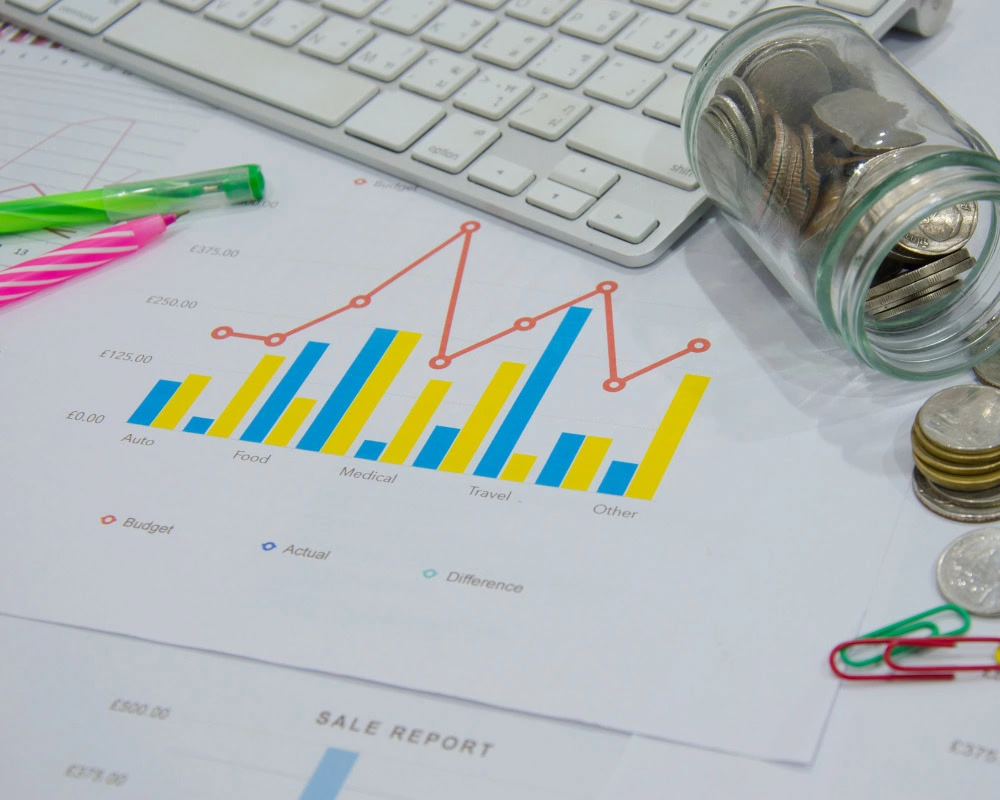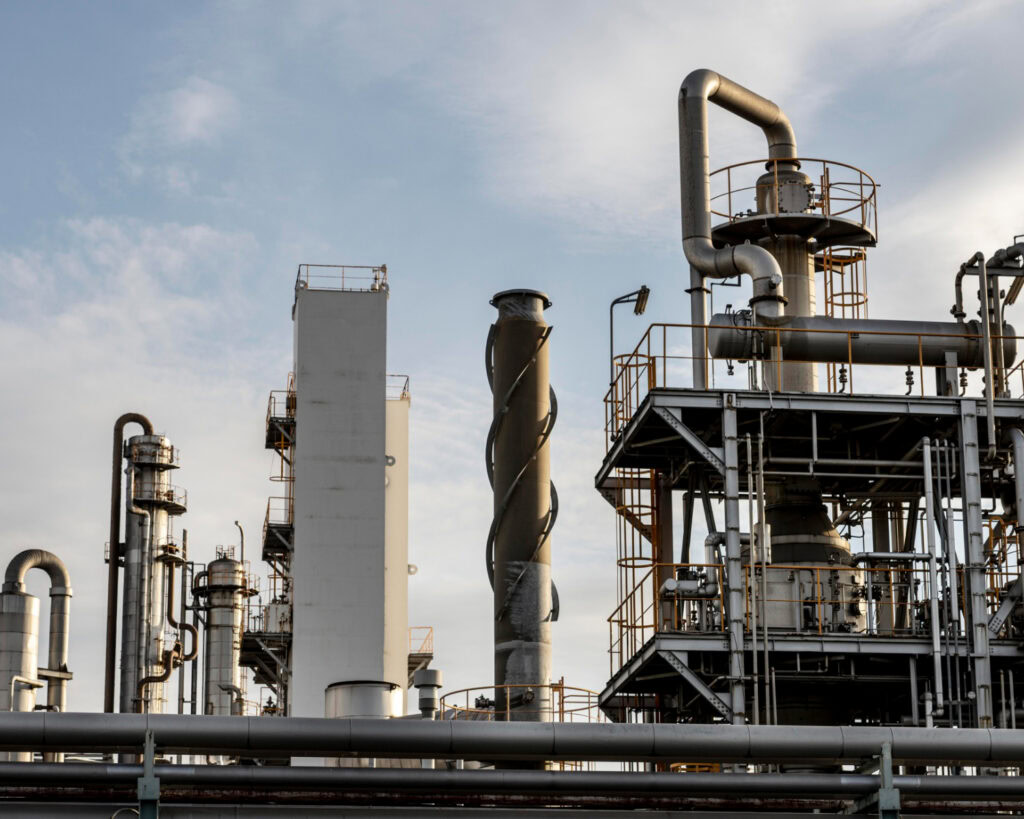Introduction
Discover the 21 industrial performance indicators that are essential for optimizing your production site! Find out how these KPIs can help you improve productivity, quality, costs, profitability and efficiency. human resourcessupply chain, safety and profitability.
1. Control your human resources with these indicators industrial performance
The effective human resources management is a fundamental pillar of industrial performance. Motivated and committed employees are the key to a company's success.
Absenteeism rates: Identify problems and motivate your team.
The absenteeism rate is an essential industrial performance indicator for assessing the health of your workforce. It enables you to measure the frequency of unplanned employee absences, whether due to illness, stress or other reasons. A high rate of absenteeism can lead to production delays, increased workload for other employees and a drop in overall motivation. If you monitor this rate closely, you can identify potential problems and put measures in place to improve employee satisfaction and well-being.
Staff turnover: how do you maintain a stable, high-performance team?
Staff turnover, also known as turnover rate, measures the rate at which employees leave and arrive at your company. If the turnover rate is high, it can be costly in terms of recruitment and training. training new employeesNot to mention the risk of losing accumulated knowledge and expertise. To maintain a stable, high-performance team, it's important to understand the reasons why employees leave, and to put in place strategies such as optimal management of the schedule employees.
Employee satisfaction index: Increase productivity with happy staff.
L'indsatisfaction ice measures the level of employee satisfaction and fulfillment within the company. Satisfied employees are more motivated, more committed and more likely to contribute positively to the success of your production site. To increase productivity and overall efficiency, it's crucial to regularly gather feedback from your employees, identify potential problems and implement initiatives to improve their job satisfaction.
By analyzing these key industrial performance indicators relating to your human resources, you can make informed decisions and implement relevant actions to optimize your team's industrial performance. Remember that human capital is an invaluable resource, and that investing in the well-being and motivation of your employees will have a positive impact on your company as a whole.
2. Monitor your production costs with these industrial performance indicators
Production cost per unit: Optimize your processes to reduce expenses.
The production cost per unit measures the amount spent to manufacture each product or provide each service. It is a fundamental indicator for assessing the efficiency of your production processes. A high cost per unit can be a sign of waste, bad practices or poor resource utilization. Monitoring the cost of production enables you to identify opportunities for optimization, streamline your processes and reduce unnecessary expenditure, all of which will contribute directly to increasing your profitability.
Cost of quality: How to avoid losses due to production defects?
The cost of quality is an indicator that evaluates the expenses incurred to rectify production defects or quality problems. It includes not only the direct costs of repairing or replacing defective products, but also indirect costs such as product recalls, lost customers and the impact on the company's reputation. You can identify the sources of defects and implement preventive measures to improve product quality and reduce financial losses.
Preventive maintenance costs: Keep your equipment running smoothly.
The cost of preventive maintenance measures the expenses incurred to ensure the regular, planned maintenance of your industrial equipment. Preventive maintenance aims to avoid costly breakdowns and extend the life of your machines. It enables you to assess the effectiveness of your maintenance practices, anticipate repair and replacement needs, and avoid unplanned production interruptions. Effective preventive maintenance keeps your equipment running at peak performance, and helps you control costs over the long term.
3. Measure quality with these performance indicators industrial
Conformity rate: Guarantee the quality of your products.
The compliance rate measures the percentage of products that meet established specifications and quality standards. A high compliance rate is a sign of efficient production in line with market requirements. By regularly monitoring this rate, you can identify non-conformity problems and take corrective action to improve the quality of your products. A high compliance rate boosts customer satisfaction and reduces the cost of returns and replacements.
Number of defects per batch: Identify problems and improve your processes.
The number of defects per batch measures the quantity of defective or non-conforming products identified in a given production group. This indicator enables you to detect specific manufacturing problems and identify process stages requiring special attention. Analyzing the reasons for defects will enable you to improve quality, reduce rejects and optimize manufacturing processes.
Reliability coefficient: Make sure your products meet quality standards.
The reliability coefficient assesses the ability of your products to maintain their industrial performance and quality over a given lifetime. This indicator is particularly important for products that need to operate reliably over the long term, such as industrial equipment or medical devices. By monitoring the reliability coefficient, you can identify products with premature failures and take steps to improve their design and manufacture.
4. Optimize your supply chain with these performance indicators industrial
Delivery times: Reduce lead times for more efficient production.
Lead time is the time it takes to deliver finished products to customers, from order to receipt. Reducing this lead time will improve your company's responsiveness to market demand. You can do this by implementing inventory management strategies, optimizing production flows, building strong partnerships with reliable suppliers, and using real-time supply chain tracking and management technologies.
Customer service rate: Build customer loyalty with fast, reliable delivery.
The customer service rate measures your supply chain's ability to deliver products on time, and to meet customer expectations in terms of product quality and availability. A high service rate is synonymous with customer satisfaction and loyalty, which strengthens your company's reputation. To optimize it, simply identify the weak points in your supply chain and implement corrective measures to improve service levels.
Stock levels: Avoid shortages and overstocks for optimum management.
Stock levels measure the quantity of raw materials and finished products in your supply chain. Too little stock can lead to shortages and production delays, while too much stock means high storage costs and the risk of product expiry. Adjust stock levels in line with forecast demand to avoid stock-outs and overstocking, while optimizing the management of your financial resources.
5. Ensure safety at work with these relevant industrial performance indicators
Accident rates: Protect your employees and improve working conditions.
The accident rate measures the number of accidents or incidents that occur in the workplace. This indicator is a direct reflection of the safety of your working environment. A high accident rate can lead to absenteeism, serious injury or even the loss of qualified personnel. It is an important indicator because it enables you to anticipate risky situations and take preventive measures to improve working conditions, train your staff in safety and put in place appropriate procedures to reduce the risk of accidents.
Number of incidents reported: Prevent problems before they escalate.
The number of reported incidents measures the frequency with which employees report unsafe events or situations at work, even if they have not resulted in accidents. A high number of reported incidents indicates that your employees are aware of potential problems and are committed to risk prevention. Encourage open and transparent incident reporting to identify problems before they escalate into more serious accidents. This will enable you to implement corrective measures and continuously improve workplace safety.
Accident frequency and severity index: Identify risk areas for better prevention.
The accident frequency and severity index is a combined indicator that takes into account the number and severity of workplace accidents. This index enables you to assess the potential severity of the risks to which your employees are exposed. By identifying risk areas where accidents are frequent or likely to have serious consequences, you can focus your prevention efforts where they are most needed. This will help you reduce the overall number of accidents and create a safer, healthier working environment for your employees.
6. Monitor your profitability with these financial performance indicators
Gross margin: Optimize your revenues and costs for greater profitability.
Gross margin measures the percentage of revenue remaining after subtracting direct production costs. It is an essential indicator for assessing the profitability of your operations. A high gross margin indicates that your products or services are being sold at a price high enough to cover production costs and generate profits. To optimize your gross profit margin, you can look for ways to increase revenues, reduce production costs, negotiate better rates with suppliers or improve the efficiency of your processes.
ROI (Return on Investment): Evaluate the industrial performance of your investments with complete transparency.
ROI (Return on Investment) evaluates the financial return on your investment. It measures the net profit generated in relation to the total cost of the investment. By monitoring ROI, you can assess the profitability of your investment projects and make informed decisions regarding the allocation of your financial resources. A positive ROI indicates that your investments have been profitable, while a negative or low ROI may require adjustments or strategy revisions.
Rate of return on investment (ROI): Maximize the use of your financial resources.
The TRCI enables you to assess the overall return on your capital investments. It takes into account all profits generated in relation to the total capital invested in the company. The TRCI is a key indicator for assessing the efficient use of your financial resources. A high TRCI indicates that your investments are well managed and are generating significant returns, strengthening your company's overall profitability. You can identify the best performing investment areas and make strategic decisions to maximize your return on capital.
7. Industrial performance indicators not to be missed
Work productivity: How to maximize your team's efficiency!
Labor productivity allows you to evaluate the amount of production achieved per unit of work, usually expressed in terms of output per hour or per employee. High productivity indicates that your team is efficient and that your production processes are optimized. You can invest in employee training, use cutting-edge technologies, optimize workflows and foster a work environment conducive to collaboration and efficiency.
Synthetic efficiency ratio (SER): Optimize your equipment utilization.
The Synthetic Efficiency Ratio (SER) measures the overall efficiency of your production equipment, taking into account operating time, expected production time and industrial performance losses. A high SRR indicates that your equipment is well utilized and operating at full capacity. To improve OEE, you can plan preventive maintenance, monitor unplanned downtime, analyze the causes of industrial performance losses, and invest in more efficient or upgraded equipment.
Environmental performance index: Reduce your ecological impact while improving production.
The environmental performance index assesses the efficiency of your production site in terms of energy consumption, waste management and carbon emission reduction. A high Industrial Environmental Performance Index indicates that your company is committed to sustainable, environmentally-friendly production. To put this into practice, you can adopt eco-responsible practices, recycle waste, optimize the use of resources and invest in green technologies.
Conclusion:
By exploring the 21 industrial KPIs essential for optimizing your production site, we've discovered the importance of these strategic measures in managing and improving your industrial activity. Each of these Industrial Key Performance Indicators offers valuable information that enables you to make informed decisions to enhance the efficiency, quality and profitability of your business.
By focusing on Labor Productivity, Synthetic Efficiency Ratio (SER) and Environmental Performance Index (EPI), you can create a high-performance, environmentally-friendly working environment. These industrial performance indicators help you optimize your human resources, maximize equipment utilization and reduce your ecological impact, while improving your overall performance.
By closely monitoring production costs, product quality and supply chain management, you can identify opportunities for optimization and cost reduction. The quality of your products will guarantee customer satisfaction and strengthen your market position.
What's more, workplace safety is a top priority to protect your employees and prevent the risk of accidents. You create a safe and productive working environment.
Finally, financial performance indicators such as gross profit margin, ROI and TRCI enable you to assess your company's financial industrial performance. By optimizing your revenues, costs and investments, you ensure efficient management of your financial resources.
In conclusion, the wise use of these 21 industrial performance indicators gives you a global vision of your production site, helps you identify levers for improvement, and enables you to make strategic decisions for the growth and success of your business. By combining a proactive approach with hard data, you'll be able to successfully meet industry challenges and achieve your long-term objectives. With these industrial performance indicators, you can pave the way for greater efficiency, higher quality and enhanced profitability in a constantly changing industrial world.




